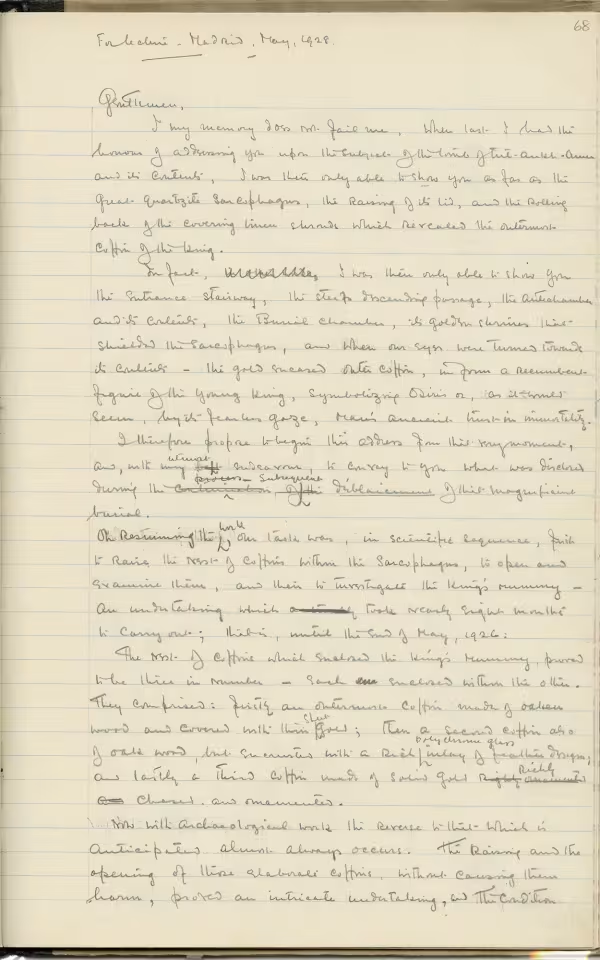TAA i.2.6.68

© Griffith Institute,
University of Oxford
For lecture - Madrid, May, 1928.
Gentlemen,
If[?] my memory does not fail me, when last I had the
honour of addressing you upon the subject of the tomb of Tut.ankh.Amen
and its contents, I was then only able to show you as far as the
great quartzite Sarcophagus, the raising of its lid, and the rolling
back of the covering linen shrouds which revealed the outermost
coffin of the king.
In fact, in other words I was then only able to show you
the entrance stairway, the steep descending passage, the Antechamber
and its contents, the Burial Chamber, its golden shrines that
shielded the Sarcophagus, and when our eyes were turned towards
its contents - the gold encased outer coffin, in form a recumbent
figure of the young king, symbolizing Osiris or, as it would
seem, by its fearless gaze, man’s ancient trust in immortality.
I therefore propose to begin this address from that very moment,
and, with my best/<utmost> endeavour, to convey to you what was disclosed
during the continuation/<process> of the/<subsequent> déblaiement of that magnificent
burial.
On resuming the <work>, our task was, in scientific sequence, first
to raise the nest of coffins within the Sarcophagus, to open and
examine them, and then to investigate the king’s mummy –
an undertaking which was likely[?] took nearly eight months
to carry out; that is, until the end of May, 1926:
The nest of coffins which enclosed the king’s mummy, proved
to be three in number – each one enclosed within the other.
They comprised: firstly an outermost coffin made of oaken
wood and covered with thin <sheet> gold; then a second coffin also
of oak wood, but encrusted with a rich <polychrome glass> inlay of feather design;
and lastly a third coffin made of solid gold right ornamented/<richly>
and chased and ornamented.
Now with archaeological work the reverse to that which is
anticipated almost always occurs. The raising and the
opening of those elaborate coffins, without causing them
harm, proved an intricate undertaking, and the condition